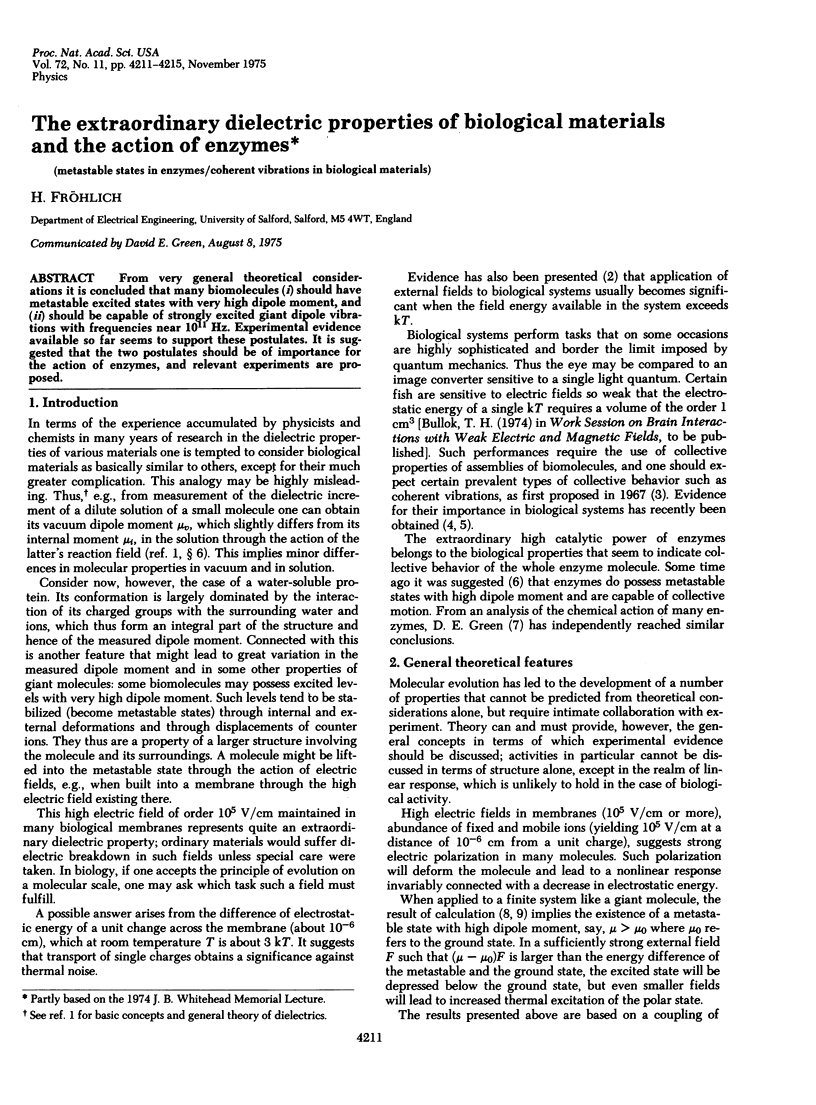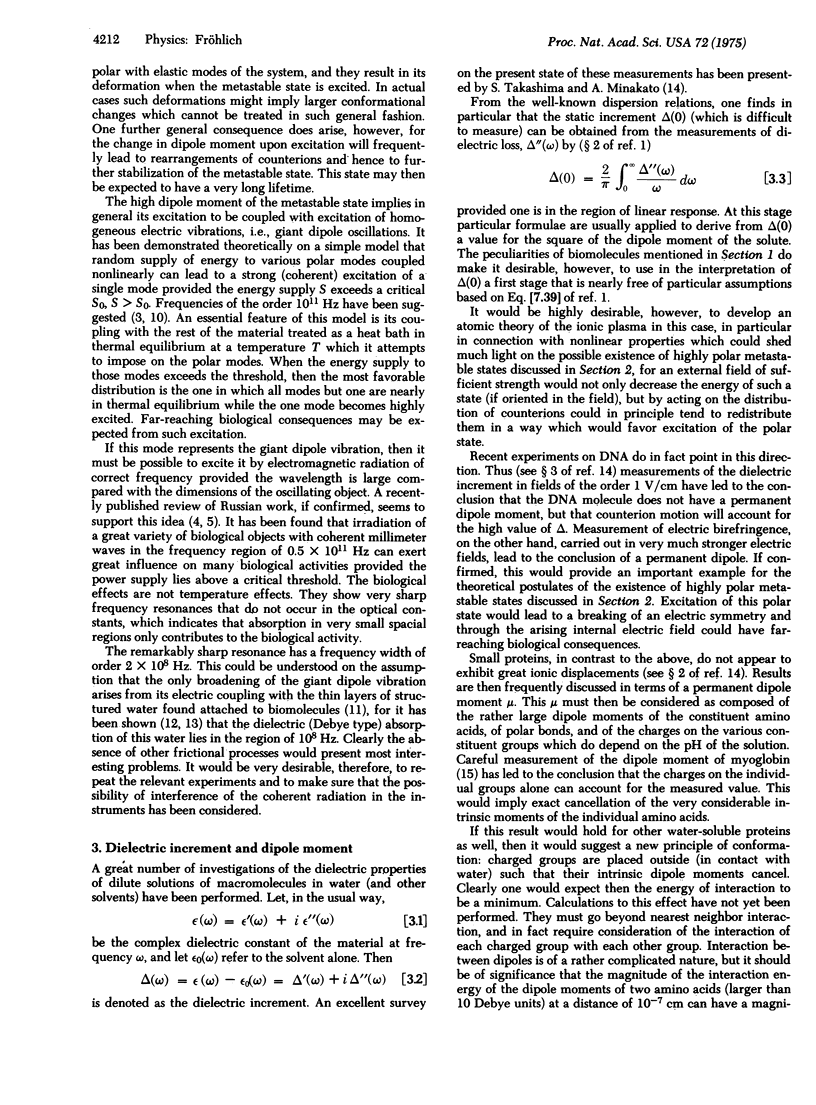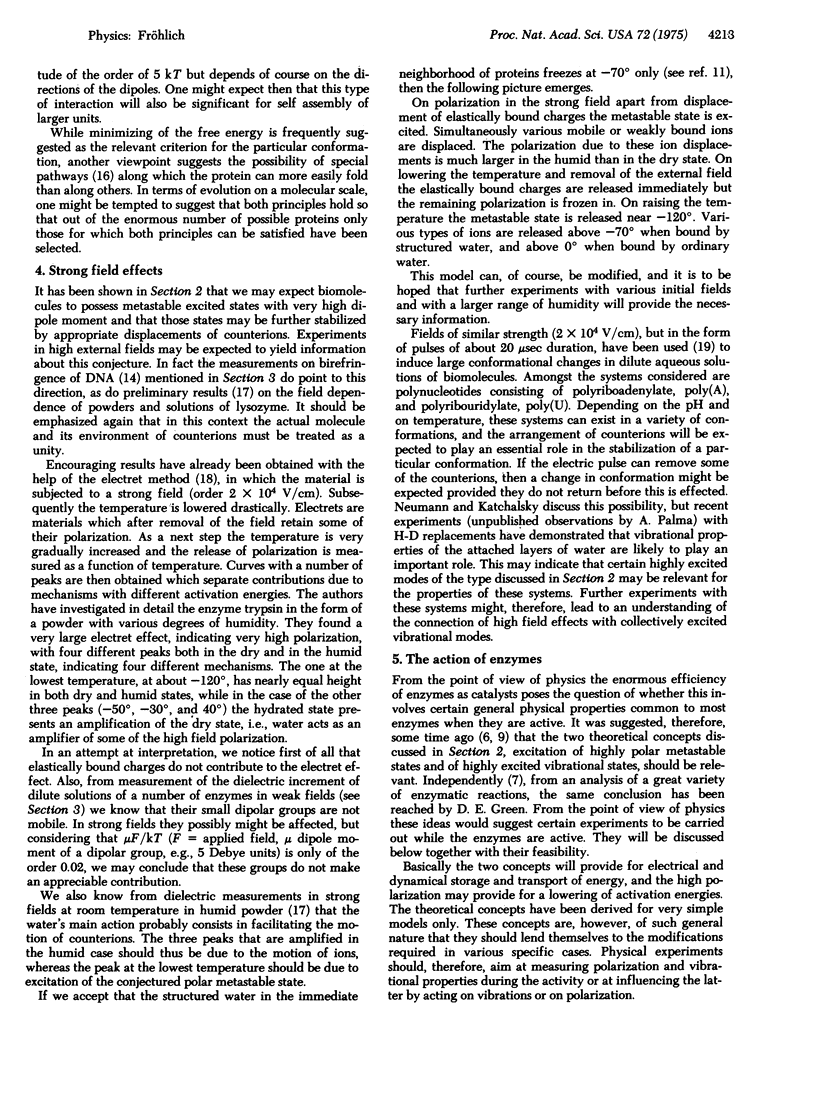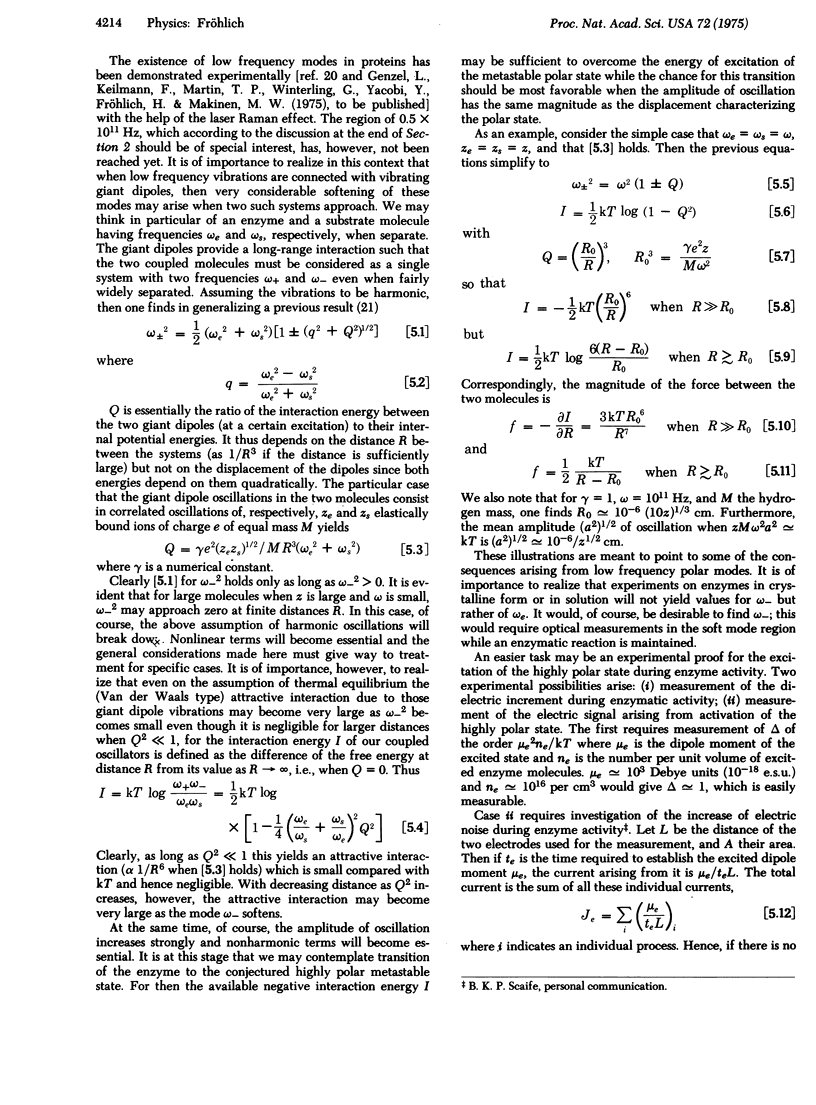Abstract
From very general theoretical considerations it is concluded that many biomolecules (i) should have metastable excited states with very high dipole moment, and (ii) should be capable of strongly excited giant dipole vibrations with frequencies near 10(11) Hz. Experimental evidence available so far seems to support these postulates. It is suggested that the two postulates should be of importance for the action of enzymes, and relevant experiments are proposed.
Full text
PDF




Selected References
These references are in PubMed. This may not be the complete list of references from this article.
- Brown K. G., Erfurth S. C., Small E. W., Peticolas W. L. Conformationally dependent low-frequency motions of proteins by laser Raman spectroscopy. Proc Natl Acad Sci U S A. 1972 Jun;69(6):1467–1469. doi: 10.1073/pnas.69.6.1467. [DOI] [PMC free article] [PubMed] [Google Scholar]
- Grant E. H. Dielectric dispersion in bovine serum albumen. J Mol Biol. 1966 Aug;19(1):133–139. doi: 10.1016/s0022-2836(66)80055-4. [DOI] [PubMed] [Google Scholar]
- Kuntz I. D., Jr, Kauzmann W. Hydration of proteins and polypeptides. Adv Protein Chem. 1974;28:239–345. doi: 10.1016/s0065-3233(08)60232-6. [DOI] [PubMed] [Google Scholar]
- Neumann E., Katchalsky A. Long-lived conformation changes induced by electric impulses in biopolymers. Proc Natl Acad Sci U S A. 1972 Apr;69(4):993–997. doi: 10.1073/pnas.69.4.993. [DOI] [PMC free article] [PubMed] [Google Scholar]
- Schlecht P. Dielectric properties of hemoglobin and myoglobin. II. Dipole moment of sperm whale myoglobin. Biopolymers. 1969;8(6):757–765. doi: 10.1002/bip.1969.360080606. [DOI] [PubMed] [Google Scholar]


